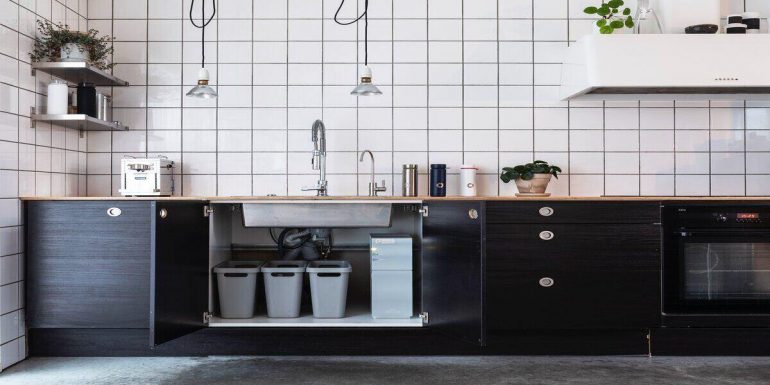The housing market is booming right now, and many families are embarking on their home ownership journeys. It is an exciting time, and there are many considerations when relocating to a new home and potentially a new area.
Whether or not you’re well versed in your region’s water quality. You may be wondering if you need a reverse osmosis system, a water softener, or both?
The answer is more complicated than we might think. And whether your home needs one system or both depends on your situation. We will break down what reverse osmosis systems or water softeners do and why you need them.
Start With Testing

The first step in this process is testing your water and contaminants. Whether you do this by hiring a professional or use a DIY testing kit is up to you. But it will help you assess the level of hardness and test for any other harmful contaminants in the water that your family drinks and showers in daily.
Water hardness is classified according to the milligrams per liter (mg/L) of dissolved calcium carbonate: 0 to 60 mg/L is classified as soft to slightly hard; 61 to 120 mg/L is moderately hard; 121 to 180 mg/L is hard; more than 180 mg/L is very hard.
Why Do I Need A Water Softener?

Hard water is a common occurrence in American households. With roughly 85 percent of homes in the U.S. dealing with the issue. Simply put, hard water is water with varying levels of calcium, magnesium, and other minerals running through their home’s plumbing, appliances, and fixtures.
Hard water isn’t harmful to your health, but it can be to the health of your home. For example, conventional water heaters will often collect sediment and mineral deposits that accelerate wear, causing premature failure.
The core problem with hard water is that those minerals leave deposits. Known as scaling, in our indoor plumbing piping, appliances, showers, tubs, sinks, and faucets. Which can reduce the lifespan of our home’s equipment and lead to costly repairs.
Another issue is that hard water won’t break down soaps and detergents as effectively. Which takes more effort and water to keep you and your clothes clean.
Water softeners “soften” water through the ion-exchange process, which means that the calcium and magnesium ions found in hard water are exchanged for sodium and potassium ions. Softening the water and eliminating the issue of scaling.
Typically, the exchange medium is sodium or potassium, but synthetic resin beads are sometimes used, too. The exchange medium isn’t critical, although we recommend sticking with a reputable Rheem, Fleck, Pentair, PolyHalt, or Whirlpool water softener.
A crucial difference between a water softener and a reverse osmosis system is that a water softener is used strictly to remove mineral deposits. It does not filter or treat water for potentially harmful contaminants that your water testing report may have uncovered.
Why Do I Need A Reverse Osmosis System?

A reverse osmosis system (RO system) removes contaminants from water with a highly effective filtering strategy. Typically, an RO system removes sediment and chlorine from the water with a pre-filter.
Forcing water through a semipermeable membrane that removes dissolved solids. Finally, the water exits the RO membrane, where it passes through a postfilter to treat the water once more before reaching a dedicated dispenser or faucet — usually where you’ll get water for cooking and drinking.
Essentially, the water will filter three or more times before reaching your fixture. And leaving you with the cleanest drinking water possible. The level of coverage varies between systems, and manufacturers target a wide range of harmful pollutants.
Some of the things that an RO system will remove include, but are not limited to, fluoride, salt, sediment, chlorine, arsenic, volatile organic compounds (VOCs), herbicides and pesticides, and many other contaminants.
RO systems do not treat bacteria and viruses. Still, those are already taken care of by your city’s treatment plant. And should be microbiologically safe when water reaches your home.
If you happen to live in a rural or removed area and require a method to treat living organisms and viruses in your water, UV disinfection systems are often the best approach.
Do I Need One or Both?
As we said at the start of all this, it will depend on your water tests. For many American homes, a combination of the two is often the best solution and offers a few distinct advantages.
First, a water softener will extend the life of all appliances and the plumbing in your home. As it will eliminate mineral deposits from your water supply and save you money over the long term.
That benefit extends to the filters within an RO system designed to capture calcium and magnesium. But they are usually small, and untreated water will increase replacement intervals. When using soft water, the RO system will not force to filter more particulates work harder.
It is important to remember that your RO system only treats the water of one faucet or dispenser and not your entire home. The RO system is still susceptible to wear. And tear that hard water has on other plumbing aspects. Causing build-up in your plumbing, sinks, showers, bathtubs, toilets, and more.
Protecting all aspects of your home’s plumbing is an excellent incentive. And one that will undoubtedly save you lots of money over the years. Another advantage of an RO system is that it will save you from buying expensive and wasteful bottled water, which will spare the environment wasteful plastic bottles.
The cost savings of using both a water softener and an RO system cannot be understated. These two treatments can save you thousands in costly repairs and appliance replacement.
Also, the RO system will save you from buying expensive bottled water and help protect the ecosystem from disposing of plastic bottles. The benefits of these systems are clear and, again, will depend on your circumstances.




